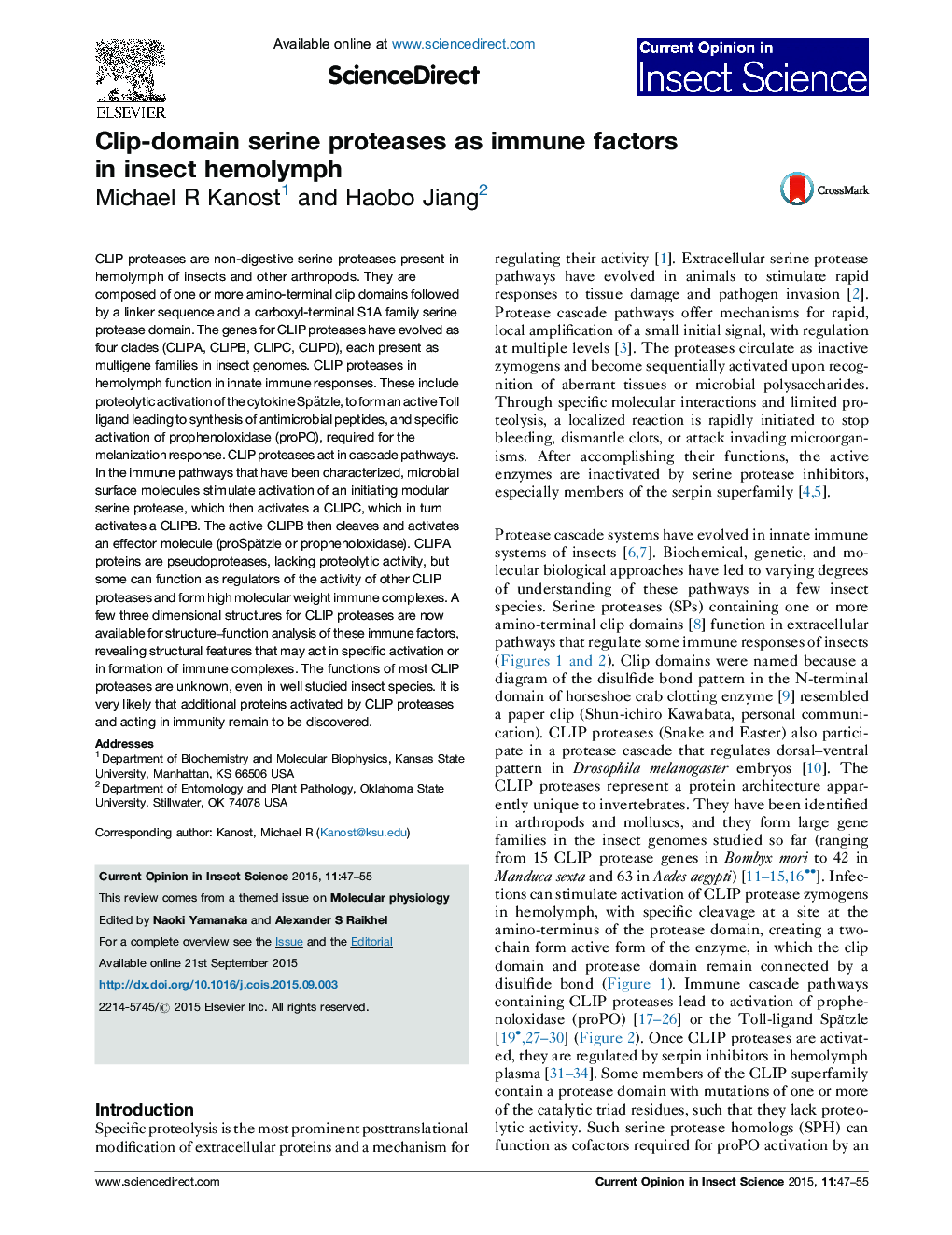| Article ID | Journal | Published Year | Pages | File Type |
|---|---|---|---|---|
| 4508167 | Current Opinion in Insect Science | 2015 | 9 Pages |
•CLIP proteases contain one or more amino-terminal clip domains and a carboxyl-terminal serine protease domain.•CLIP proteases in insect hemolymph are rapidly activated by specific proteolysis after immune stimulation and participate in cascade pathways to trigger activation of prophenoloxidase or the Toll ligand spätzle.•Some members of the CLIP protease superfamily are pseudoproteases known as serine protease homologs, which can function to regulate immune pathways.•The function of most insect CLIP proteases is unknown, even in well-studied model systems.
CLIP proteases are non-digestive serine proteases present in hemolymph of insects and other arthropods. They are composed of one or more amino-terminal clip domains followed by a linker sequence and a carboxyl-terminal S1A family serine protease domain. The genes for CLIP proteases have evolved as four clades (CLIPA, CLIPB, CLIPC, CLIPD), each present as multigene families in insect genomes. CLIP proteases in hemolymph function in innate immune responses. These include proteolytic activation of the cytokine Spätzle, to form an active Toll ligand leading to synthesis of antimicrobial peptides, and specific activation of prophenoloxidase (proPO), required for the melanization response. CLIP proteases act in cascade pathways. In the immune pathways that have been characterized, microbial surface molecules stimulate activation of an initiating modular serine protease, which then activates a CLIPC, which in turn activates a CLIPB. The active CLIPB then cleaves and activates an effector molecule (proSpätzle or prophenoloxidase). CLIPA proteins are pseudoproteases, lacking proteolytic activity, but some can function as regulators of the activity of other CLIP proteases and form high molecular weight immune complexes. A few three dimensional structures for CLIP proteases are now available for structure–function analysis of these immune factors, revealing structural features that may act in specific activation or in formation of immune complexes. The functions of most CLIP proteases are unknown, even in well studied insect species. It is very likely that additional proteins activated by CLIP proteases and acting in immunity remain to be discovered.
